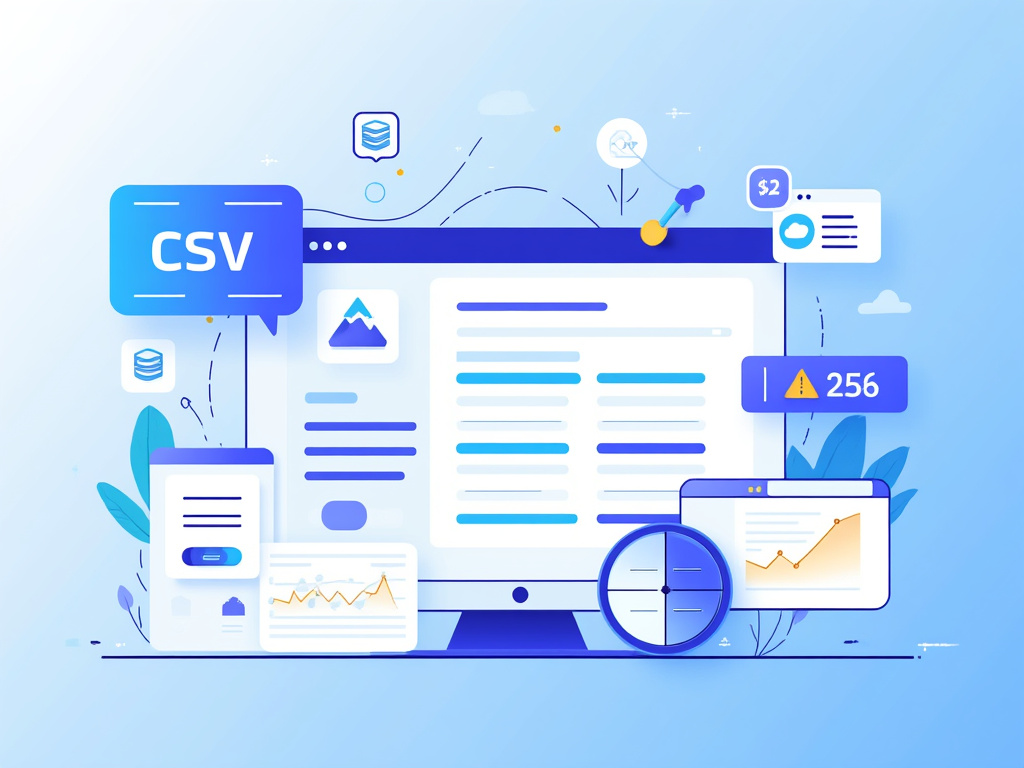In the digital age, data is at the core of any software application. It's what makes an empty shell of a program into a powerful tool that can drive business growth, enhance customer experiences, and streamline operations. But before data can work its magic, it must be onboarded into the application—a process that, while crucial, can be fraught with challenges. This is where the concept of data onboarding comes in, and platforms like Tablingos are revolutionizing the way businesses handle this critical step.
Data onboarding is the process of transferring data from one system to another. It's a critical phase in the lifecycle of data, where it's collected, cleansed, transformed, and finally loaded into a new software solution. This process is not just about moving data; it's about ensuring that the data is accurate, consistent, and ready to deliver value in its new environment.
Imagine you've just launched a new SaaS platform. The interface is sleek, the features are cutting-edge, and your customers are eager to dive in. But there's a catch: without their data, your customers can't fully utilize your product. Whether it's customer contact information, sales records, or product inventories, this data is essential for your customers to achieve their goals using your platform.
Data onboarding is often referred to by various names—data migration, data upload, or data import—but at its core, it's about making customer data as accessible and usable as possible within a new system. It's a foundational element of customer onboarding and retention strategies, as a seamless data onboarding experience can significantly influence whether a customer continues to use a product or service.
Key Aspects of Data Onboarding
Two of the most critical aspects of data onboarding are data validation and data transformation. Data validation is the process of ensuring that the data being imported is accurate and adheres to the necessary quality standards. This step is vital because incorrect or incomplete data can lead to a host of problems down the line, from minor inconveniences to major system failures.
Data transformation, on the other hand, involves converting data from its original format into the format required by the new system. This could include changing date formats, applying currency conversions, or even more complex operations like merging data fields or splitting a single field into multiple ones.
Platforms like Tablingos offer a robust set of tools to handle both data validation and transformation. With pre-built validation rules and the ability to create custom validators, Tablingos ensures that data integrity is maintained throughout the onboarding process. Similarly, its native transformation rules and custom transformation capabilities allow businesses to tailor the data to their specific needs, ensuring a smooth transition into the new application.
The Importance of Efficient Data Onboarding
A streamlined data onboarding process is not just a convenience; it's a competitive advantage. In today's fast-paced business environment, companies cannot afford to waste time on manual data entry or correcting errors post-import. A smooth data onboarding process can drastically improve the customer experience, leading to higher retention rates and more successful deals.
Moreover, data onboarding is not a one-time event. As businesses evolve, they will need to onboard new data sets regularly. This is where automation and scalability become crucial. Platforms like Tablingos offer multi-tenant tools that allow for the creation of multiple workspaces, enabling simultaneous work on multiple projects while keeping data segregated. This level of organization and flexibility is essential for businesses looking to scale their operations without compromising on data quality.
Challenges in Data Onboarding
Despite the importance of data onboarding, the process can be fraught with challenges. One of the primary challenges is data format. Data coming from different systems, in different formats, needs to be integrated and consolidated into the format required by the new platform. This can be a time-consuming and error-prone process, especially when dealing with large or complex data sets.
Another challenge is ensuring data quality. Businesses must ensure that the data being onboarded is accurate, complete, and consistent. This can be particularly challenging when migrating from an aging legacy system, where data quality may have deteriorated over time.
Customer involvement can also be a challenge. Onboarding customer data often requires close collaboration between the business and its customers. This can be time-consuming and may require technical expertise on the part of the customer, which can create friction in the onboarding process.
Finally, the engineering resources required to build custom data onboarding solutions for each new client can be expensive and time-consuming. This can be a significant barrier for businesses, especially smaller ones, looking to streamline their data onboarding processes.
Tablingos: A Solution for Data Onboarding Challenges
Tablingos is a collaborative data onboarding platform designed to address these challenges. It offers a visual user interface-driven approach for mapping data sheets, allowing users to collect, translate, enrich, and deliver data files efficiently. With features like maximum security, fast and simple automation, and flexibility, Tablingos is built to scale and meet the needs of businesses of all sizes.
The platform's admin portal serves as a powerful tool for creating workspaces for teams or customers and defining reusable data validation and transformation rules across multiple projects. This allows businesses to standardize their data onboarding processes, ensuring consistency and efficiency across all their data import activities.
The customer portal, on the other hand, empowers teams or customers to load data seamlessly, further streamlining the onboarding process. By providing a user-friendly interface and intuitive tools, Tablingos makes it easy for customers to participate in the data onboarding process, reducing the burden on the business and improving the overall customer experience.
Benefits of Streamlined Data Onboarding
The benefits of a streamlined data onboarding process are numerous. By prioritizing this critical step, businesses can unlock a range of advantages that can positively impact their bottom line and customer satisfaction.
Firstly, a smooth data onboarding experience can lead to higher customer retention and loyalty. When customers can quickly and easily integrate their data into a new platform, they are more likely to continue using the product or service, reducing churn and increasing the lifetime value of each customer.
Additionally, efficient data onboarding can drive business growth by enabling faster time-to-value for new customers. By getting customers up and running quickly, businesses can accelerate the sales cycle and unlock revenue opportunities more rapidly.
From an operational standpoint, a streamlined data onboarding process can free up valuable resources that would otherwise be spent on manual data entry or troubleshooting data-related issues. This allows businesses to focus on their core competencies, such as product development and customer service, further enhancing their competitive edge.
Conclusion
Data onboarding is an essential, yet often overlooked, part of the customer onboarding experience. By prioritizing this process and employing the right tools, businesses can set themselves up for success. Platforms like Tablingos are leading the charge in simplifying data onboarding, offering robust validation and transformation features that ensure data integrity and facilitate a successful transition into new applications.
As we continue to navigate the complexities of digital transformation, the importance of efficient data onboarding cannot be overstated. It's the gateway to unlocking the full potential of your software and, ultimately, the key to delivering a superior customer experience. With the right approach and the right tools, data onboarding can be transformed from a challenge into an opportunity for growth and innovation.

